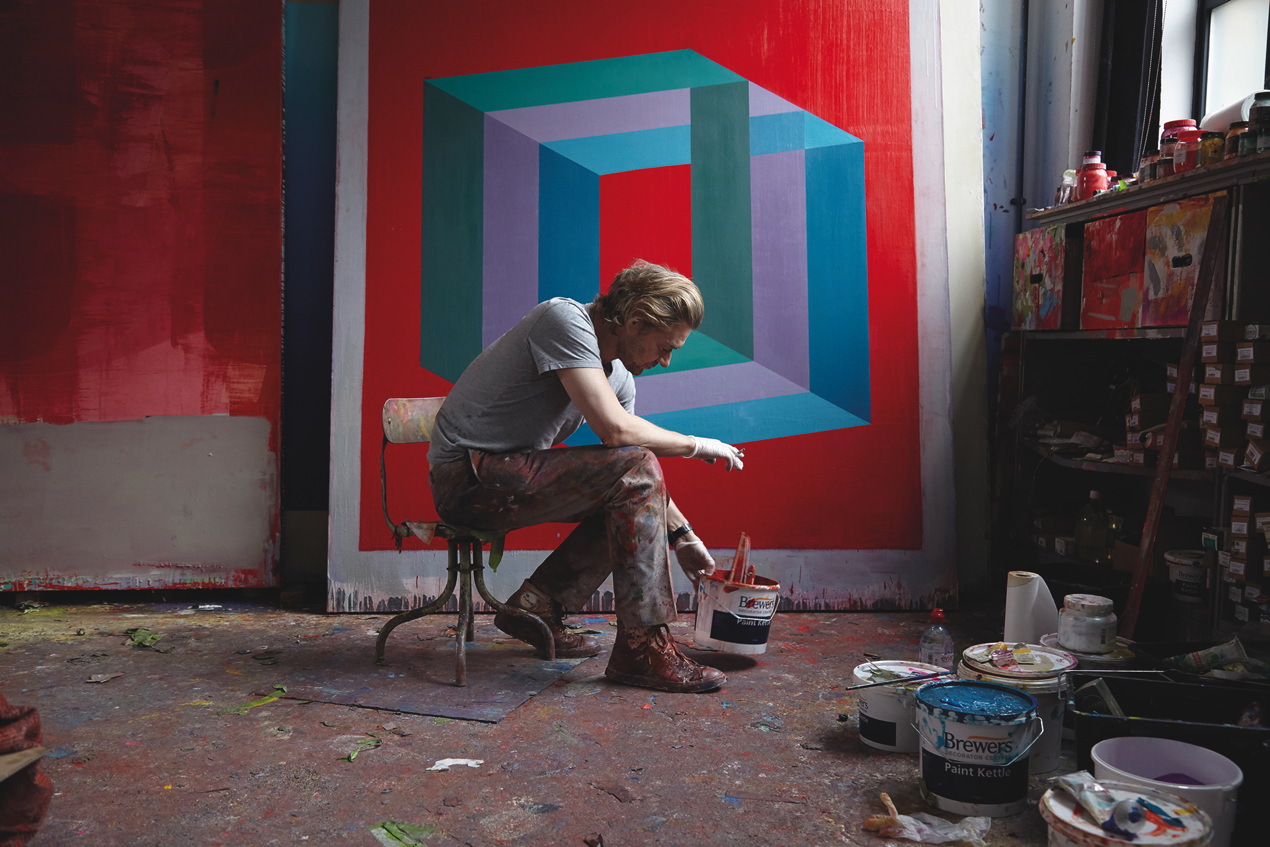In the frame: Harland Miller
In lieu of the his solo show in his hometown of York the artist shares a selection of his paintings and reveals the story behind them
I didn’t anticipate my book cover paintings becoming popular at all. I didn’t have a track record of making anything popular and so had no reason to think these would be. I’d gone beyond hoping and had given up. And I think there might be something in that – this moment, be it subconscious, when you’ve said “OK, fuck it!”, when you really are just making work for yourself, is very freeing, though certainly not commercially.
This was the nineties – you might even call it the conceptual nineties – and painting was completely out. It seemed not enough that concept art was king, painting also had to die and not just be killed off silently – put in the stocks, jeered at and have rotting veg thrown at it.
There’s much more of an equilibrium now, which is great, but it was a difficult time for painters and painting, particularly that kind of messy, sleeves-rolled-up kind of painting that I did.
I was living the very clichéd life of a penniless artist at the time I made the first Penguin book cover painting, and to add to that cliché I was living in Paris, so people didn’t even actually understand it.
The first painting I made in this series was I’m So Fucking Hard, Ernest Hemingway, and the French reading of that in English was “I’m So ‘Ard Fuckin’”. It became sexual – the very opposite of how I intended it to be read, which was as a satire on the machismo of the author.
They are not universally popular but among some people they are. I say this with some conviction because of the letters I get from people telling me what they mean to them. Some are incredibly candid and deal with a whole range of stuff – like death and love, hope and despair. There is a perception that the work is of a humorous nature and yet the majority of letters I get are pretty much the opposite.
I think the wider popularity of the paintings rests on what they say. People take the text from the painting – either as a sort of mantra, or physically by reproducing it in another place. But I’m cool with that. I like the everydayness of it – that bumper sticker feeling, like it’s doing something out there in the world, in a low-key, casual way, much the way you’d find an old tattered book lying around. You know that a lot of people have read it and it meant something to some of them.
I haven’t found a satisfactory way of answering the common question of what kind of art I do. But there are identifiable things in my work – American abstract expressionism from the 1950s for one, and of course a definite Pop sensibility – as in Jasper John’s Flags, where something graphic and iconic is reworked in the non-graphic medium of oil paint. But this is obviously a very British kind of Pop and the Penguin design doesn’t translate like the Stars and Stripes or a target.
They are also different things at different stages. I have half-finished book cover paintings in my studio that I’ve left because they are working, to my eye, as great Color Field paintings. All that painterliness gets knocked back when you work the graphics over the top. They also have this feeling of being badly printed – like that imperfect colour plate registration feel Warhol was playing with.
My Bad Weather paintings satirised ad agencies outside the north of England who had been employed to re-brand the region. That was a huge insult to us and it was also saying that the places didn’t need changing, just rebranding. So Bridlington – Something Tells Me Nothing’s Gonna Happen Tonight subverts the lyrics of a popular song to attest that there is no need for anything to happen in Brid that isn’t already happening. Let’s not try and turn it into Ibiza. I like it the way it is.
I’ve been back in my hometown of York for about a month now [working on the now postponed solo show] and time has taken on a surreal quality. I’ve been back staying with my mum in my childhood bedroom, complete with Bowie posters and all. I’m the youngest of three and my mum’s been pressing me with chores. This morning I was supposed to be talking to the press and I was fixing my mum’s curtains that wouldn’t open properly.
I thought this was a possible metaphor for the opening of the show, but obviously not a good one. If I’ve learnt anything being back here it’s that I haven’t really changed that much. I’m 56 but from the way I slip back into my old room, find a pack of cigarettes stashed in a hollowed-out wooden cat ornament and smoke one looking out the window at the rainy roof tops, I feel the same way I did when I was 16.
I’ve always lived here in Yorkshire in my head. I’ve lived all over the world and ended up in London, which is a great place for art. Thirty years ago or so it felt necessary to be there. It was also more possible to be there.
London, like New York, has become harder for artists. In my time I had a studio in Regent’s Park and a massive studio in the now fashionable Meat Market in New York. Imagine that now! But now I see artists making a life in places like Margate – look what’s going on there! It’s great to be able to do that. You don’t have to leave home for London anymore.

Leave a reply
Your email address will not be published.